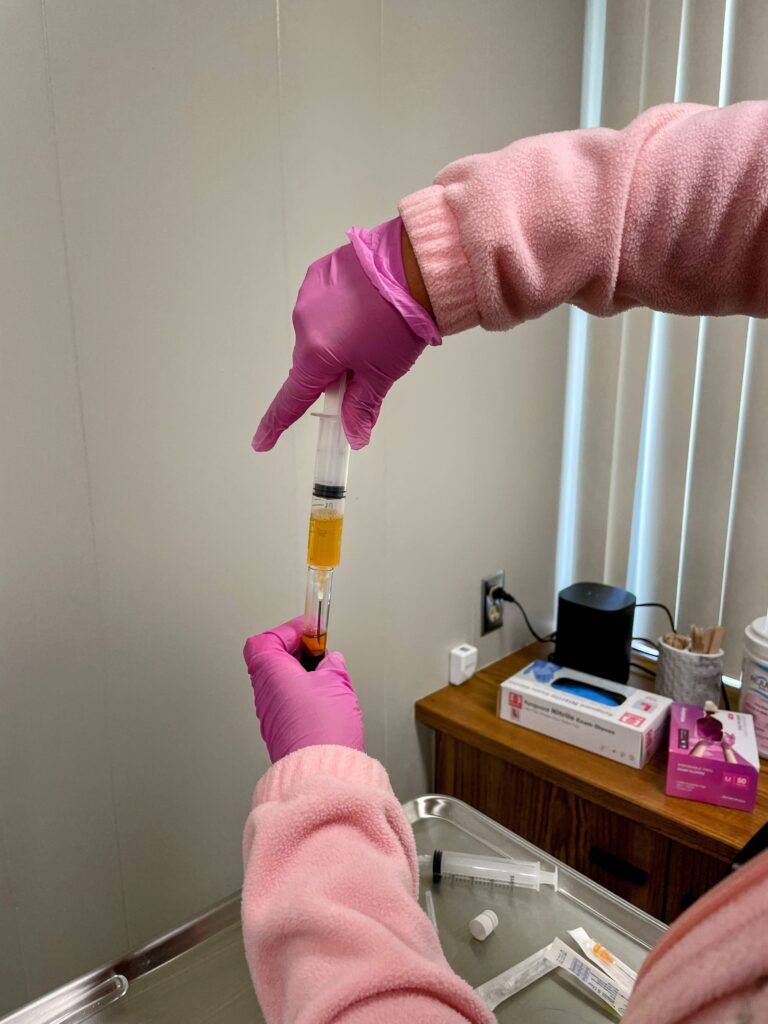Regenerative medicine using Platelet-rich plasma
Platelet-rich plasma (PRP), also known as autologous conditioned plasma, is a concentrate of platelet-rich plasma protein derived from whole blood, centrifuged to remove the red blood cells.
The human body has the natural ability to produce new cells and repair injured and diseased tissues. PRP takes advantage of this amazing ability because it has a high concentration of platelets. Platelets contain numerous proteins that are essential for the healing process.
At AMLC, we utilize the power of platelet-rich plasma because of it contains several growth factors and cytokines that are known to stimulate healing of soft tissues and joints.
When you suffer an injury, the platelets in your bloodstream travel to the damaged tissues and release vital healing proteins, also called growth factors and cytokines. Some of the known growth factors and cytokines present in PRP include:
 • platelet-derived growth factor
• platelet-derived growth factor
• transforming growth factor beta
• fibroblast growth factor
• insulin-like growth factor 1
• insulin-like growth factor 2
• vascular endothelial growth factor A
• vascular endothelial growth factor C
• epidermal growth factor
• Interleukin 8
• keratinocyte growth factor
• connective tissue growth factor
• Hepatocyte growth factor
• Stromal cell-derived factor 1
• Endostatin
The various growth factors secreted by platelets help tissues heal by:
• Stimulating the production of blood vessels
• Promoting cellular division and development
• Regenerating collagen, ligaments, tendons, bone, fat, and skin
• Recruiting stem cells to the area
• Preventing degeneration of healthy tissues
• Releasing proteins that allow new cells to connect and rebuild tissues
PRP accelerates the healing process by depositing a large number of platelets at the injured tissues thereby enhancing your body’s healing ability. This is particularly important in athletes who promptly need to recover from injuries.
Following a PRP injection, a larger number of growth factors are deposited at the desired site in concentrations 5-6 times what is normally available in the blood stream. As a result, PRP improves your healing process by speeding up new cell growth at the cellular level.
Indications for PRP use in regenerative medicine, orthopedics and dermatology include:
- acute muscle strains
- tendinopathy
- muscle-fascial injuries such as in plantar fasciitis
- osteoarthritis
- wound healing
- androgenic alopecia (male pattern bolding)
- skin rejuvenation such as in micro-needling.
For preparation of PRP, various protocols are used, with an underlying principle of concentrating platelets to 3–5 times physiological levels, then injecting this concentrate in the tissue where healing is desired.
PRP regulates inflammation.
Inflammation is an important part of the healing process, but it must be regulated to prevent long-term damage. After you suffer an injury, nutrients, white blood cells, enzymes, and other beneficial substances flood the affected area. Their arrival starts the healing process and leads to the initial inflammation you experience after an injury.
After a while, however, it’s important for inflammation to subside. If inflammation persists too long, it interferes with healing and starts to cause damage. The platelets in your PRP therapy are important for regulating inflammation. They release anti-inflammatory factors and anti-bacterial peptides to suppress inflammation.
PRP reduces the risk of scarring, soft tissue re-injury, chronic inflammation.
When soft tissues such as tendons and ligaments are subjected to slow healing, they tend to develop an excessive amount of scar tissue. This affects their post healing strength. Since strength declines in proportion to the amount of scar tissue, a tendon with too much scarring is easily reinjured. PRP injections help prevent this problem by accelerating healing.
What are the potential adverse effects of PRP treatment?
PRP by itself has no side effects because it is your own blood component. You may experience pain, bruising and bleeding at the injection site. There is also a possibility of infection and nerve damage at the injection site however, these risks are relatively low.
How long is does the appointment take? Usually less than 30 minutes.
How many treatments do I need? Typically, one PRP injection is effective for most acute soft tissue sports injuries. Subsequent treatments depend on the response to the first treatment. Results of the first PRP injection can fully be expected to be seen at about 6 weeks.
For more information contact us at 720 818 0533 for a free consultation and pricing.
